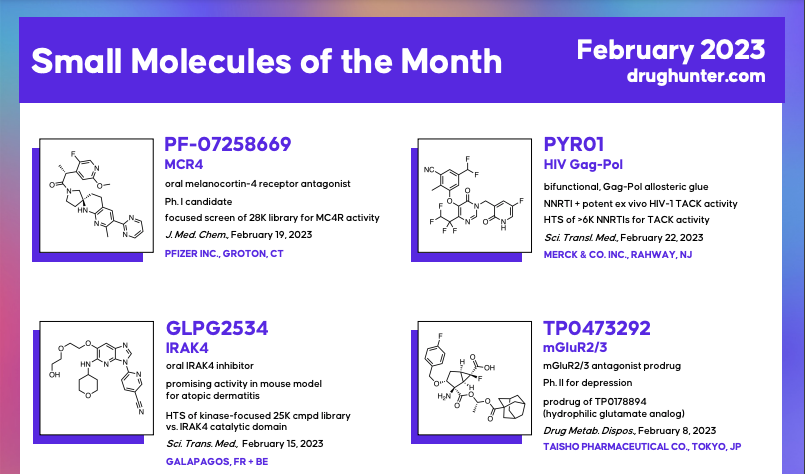Matt Hesse
Matt is Senior Scientific Editor, Drug Discovery for Drug Hunter. Matt has almost a decade of experience on the front lines of medicinal chemistry working remotely for Sage Therapeutics and for Novartis at their Emeryville, CA site in the Bay Area. Focusing mainly on infectious diseases, Matt has experience across the entire life-cycle of drug discovery - from basic research, through platform building, HTS and hit-to-lead triaging, all the way to IND-enabling studies. Most notably, during the COVID-19 pandemic, Matt led the Novartis medicinal chemistry efforts aimed at discovering a pan-coronavirus antiviral which led to a compound entering clinical trials. In addition to infectious diseases, Matt has also worked on projects in oncology and hematology and is experienced in beyond rule-of-5 chemical space drug discovery including CRBN PROTAC glue degraders as well as protein stabilization using DUBTACs. Matt likes to think of himself as a chemist who can talk biology, but suspects that the biologists are mostly just humoring him.
Matt grew up in London, UK and obtained his undergraduate MSc and PhD in organic chemistry at the University of Bristol, UK focusing on chiral organoboron chemistry before undertaking a postdoctoral position at Caltech. He lived in California for the best part of 10 years before ending up in western Pennsylvania with his wife, Sheila, and his cat, Paxman. Matt grew up a lover of the great indoors, but is now a keen hiker, rock climber and skier. He loves to cook, although loves eating even more.
More from Matt
Join the Drug Hunter Mailing List
to get free content and resources weekly. Trusted by >15,000 drug hunters worldwide. Unsubscribe anytime.
